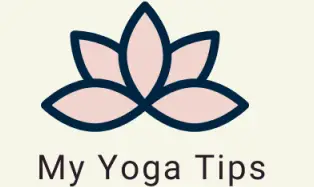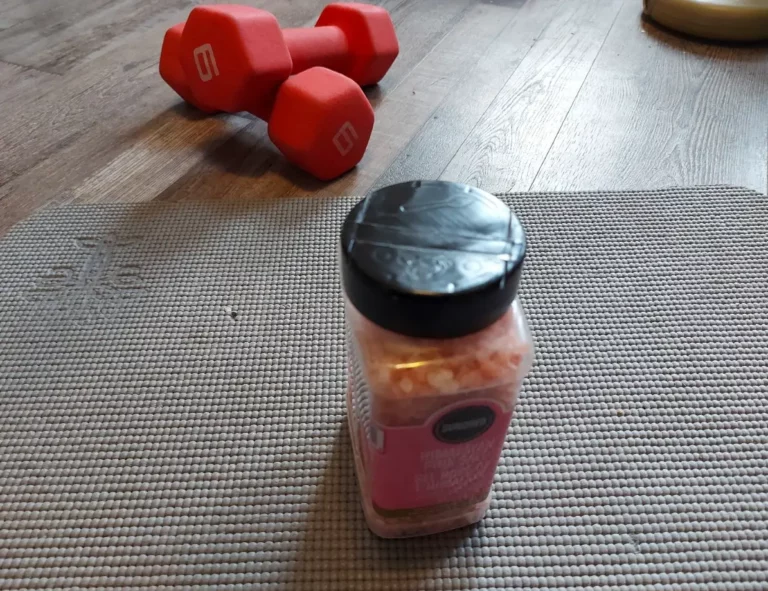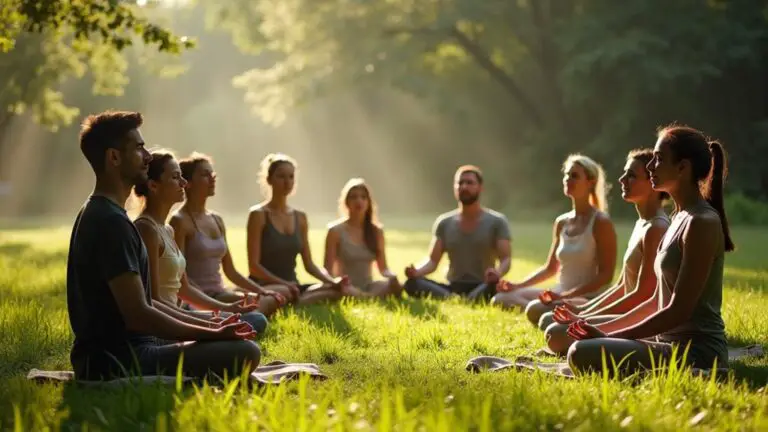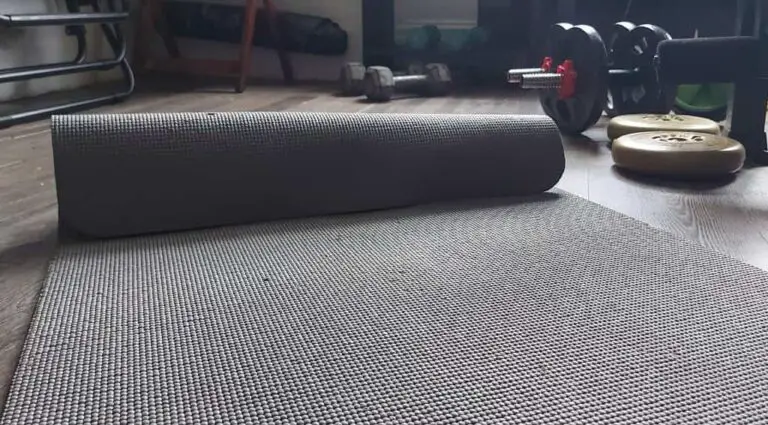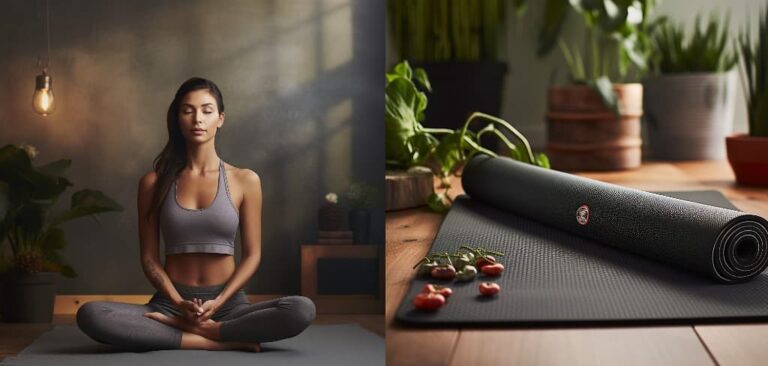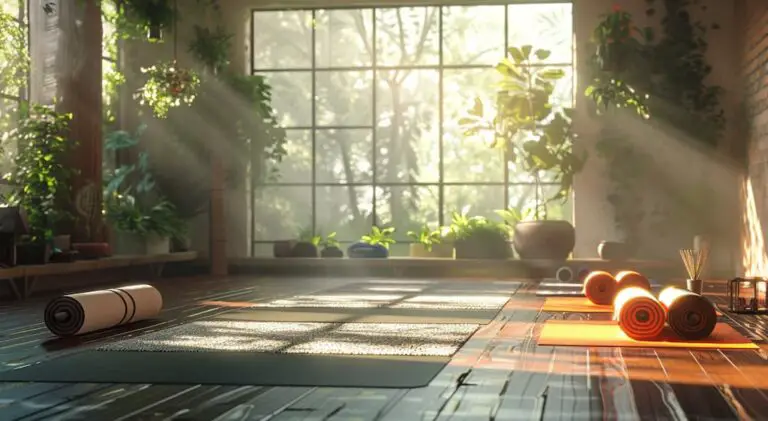Are You Using Your Yoga Mat Right? (Which Side up?)
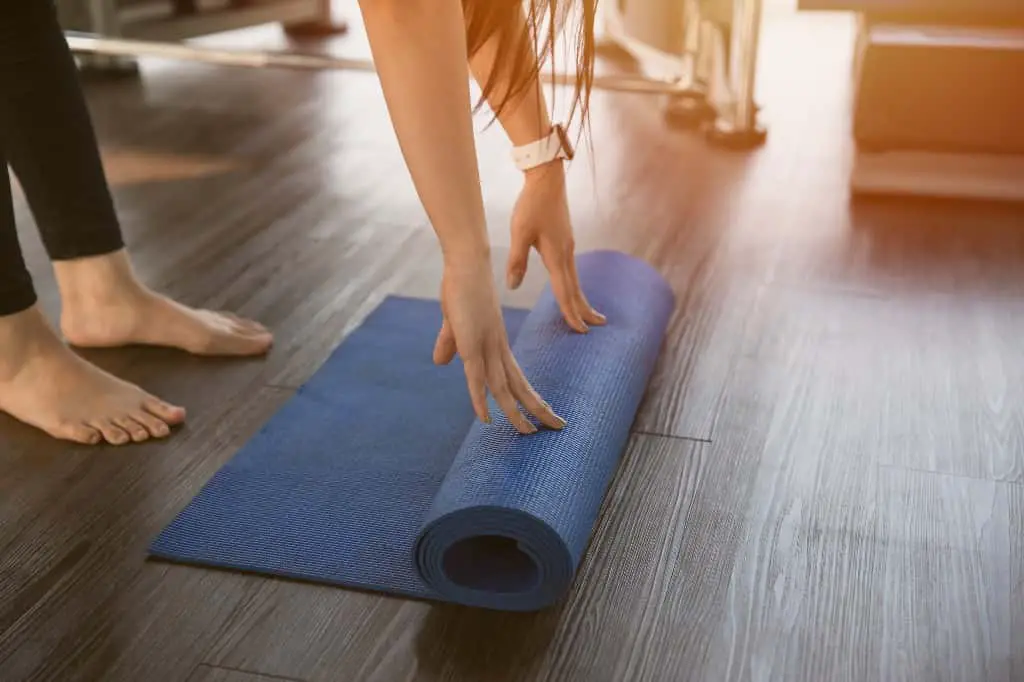
Using a yoga mat seems so basic you might doubt you need instructions, but there are indeed guidelines for getting the most from your mat. The first thing to get right? Find out which side should be against your body as you’re flowing through your yoga poses. Here’s how to tell which side of your yoga mat should be facing up.
Yoga mats generally have two different sides, each with a unique function. Because each side has a distinct purpose, they aren’t interchangeable. A yoga mat’s right side up is designed to help you keep your balance and proper alignment while you are holding poses.
Yoga mats aren’t all the same, so there’s not just one way to tell which side you should practice on. Here’s the lowdown on how to tell which is your yoga mat’s right side up.
Does It Matter Which Side Of A Yoga Mat Faces Up?
It might seem petty, but it does matter which side of a yoga mat faces up.
The one side is designed to help the mat stay put on the floor, and the other side helps keep you steady while you move into challenging positions.
So, it’s helpful to know which side goes up and which goes down.
How To Tell If A Yoga Mat Is The Right Side Up
Okay, so you now know that yoga mats’ up-facing side is supposed to stop you from going wonky while you’re trying to stay in position. But what clues should you look for when trying to identify this side?
Here’s a three-point checklist to help you tell a yoga mat’s top from its bottom.
Check # 1: Look For A Logo Or Design On The Yoga Mat
This first check is the simplest way to tell a yoga mat’s rightside up. Spot a logo on one side of the mat? That’s the side that should face the top. Does one side have a pattern or design? That’s the top side. Done.
Check # 2: Examine The Yoga Mat’s Surface
Various mats work in different ways to create their stabilizing effects. Some mats are sticky and use suction to keep you steady, while others use a bumpy texture to help you stay firmly fixed in place. Some use both stickiness and texture.
When trying to find which side of the mat to put facing up, these are the questions to ask.
Is One Side Of The Yoga Mat More Worn Than The Other?
If you’re borrowing an old mat, either from a studio or friend, there’s an easy way to tell the right side up: just look for the side that has slightly (or heavily) worn-away patches where hands and feet have rubbed against it. That’s the side you should put your own hands and feet on.
Does One Side Of The Yoga Mat Feel Sticky?
Press against the mat to see if it’s sticky. Just how sticky it feels depends on what it’s made of. PVC is stickier than eco-friendly materials like hemp or jute, for example. If one side is stickier than the other, that’s the side you should practice on.
Alert: Yoga mats don’t start sticky. Brand-new mats are coated in a thin, slippery film, which wears away as you use the mat, revealing the sticky layer beneath. If you’re trying to find the right side of a new mat, look for a smooth, almost shiny surface.
Does One Side Of The Yoga Mat Feel Bumpy?
Look at and stroke both sides of the mat to see if you can find a texturized surface. You might feel bumps, nubs, roughness, or a raised pattern.
If both sides are texturized, scrutinize them to find the one that’s more heavily textured. That’s the side that should face up.
If you spot a microfiber (like a towel) texture on one side of the mat and a bumpy texture on the other, the microfiber side is the one you should practice on.
Learn more!! see our article Tips To Choose The Best Yoga Mat for more information.
Check # 3: Try Out The Yoga Mat
If you’ve done checks one and two and still have no clue which side of the mat should face up, it’s time to get active.
Lay down the mat, step onto it, and get into Downward Dog. Note how well this side grips your hands and feet. Next, stand up, flip the mat over, and get into Downward Dog again. Note how much traction this side has on your body.
The side that stops your hands from slipping forward and feet from skidding backward is the right side.
Why Should You Use The Right Side Of A Yoga Mat?
Placing your yoga mat with the right side up will make a big difference to your practice. It will help keep you stable in balancing poses and stop slipping and sliding as you flow from pose to pose.
So, using your mat with the right side up helps you practice safely and maintain good form without having to readjust yourself constantly.
Different mats offer different degrees of grip – some keep you steady while you do standard yoga, and others can stop you from skidding even during hot and sweaty yoga.
Yoga mats grip to bare skin best, so it’s a good idea to practice on them barefoot. If you find that your mat isn’t grippy enough for you, however, try practicing in no-slip yoga socks.
Can Some Yoga Mats Be Used Both Ways?
There’s an exception to the right-side-up rule: if a manufacturer specifies that a yoga mat is reversible or double-sided, you can use it both ways.
There are two types of reversible mats. One type has two identical sides. The other type has a side that provides enough traction to keep you stable during gentle yoga and another side with extra grip and sweat-absorbing power for hot yoga sessions.
Although you can use either side of an identical-sided reversible mat, try to practice on only one side anyway so that you can wear it in. Yoga mats tend to work better a few sessions in. You can draw a squiggle on one side to help you spot it easily.
Which Side Should Be Up When You Roll A Yoga Mat?
So, you’re fully clued-up on which side is which while you’re doing yoga. But which side should face up when you roll up the mat after your sesh? Yes, there’s also a right way to roll it!
Here’s how to roll the mat to stop it from curling and to keep the dirty (floor-facing) side away from the side you train on:
- Lay out the mat with the right side up (you now know which side that is!).
- Fold the mat in half (the floor-facing side should be outside).
- Starting at the fold line, roll up the mat.
- Tie the mat or put it in its bag.
See this mat-rolling technique in action:
Conclusion
Yoga mats do much more than comfortably cushion your body against hard surfaces. When used properly, they offer support while you’re trying to balance in tricky positions. So, before you start your next yoga workout, make sure your mat is right side up!
